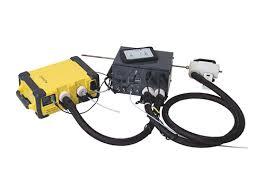FTIR Gas Analyser Market Overview: Exploring Growth Drivers and Global Adoption

The FTIR gas analyser market is witnessing robust expansion as industries and governments increasingly emphasize environmental compliance, real-time emissions monitoring, and workplace safety. FTIR (Fourier Transform Infrared) technology offers simultaneous, multi-gas detection, making it indispensable across sectors such as energy, manufacturing, chemical processing, and research institutions.
What is an FTIR Gas Analyser?
An FTIR gas analyser is an advanced monitoring device that uses infrared spectroscopy to detect and quantify various gases in a sample. These instruments work by analyzing the unique absorption patterns of gases across the infrared spectrum. Unlike conventional sensors that detect a single compound, FTIR analysers can measure multiple gases at once—offering higher efficiency and accuracy.
This capability makes them ideal for continuous emissions monitoring, leak detection, process optimization, and environmental studies. Their ability to provide real-time, non-destructive analysis has increased their adoption across multiple verticals.
Market Dynamics: What’s Driving Growth?
Several critical factors are contributing to the growth of the FTIR gas analyser market:
1. Environmental Regulations:
Governments around the world are enforcing stricter air quality and emission control regulations. Standards like the U.S. Clean Air Act, Euro 6 norms, and India's emission compliance frameworks require industries to monitor pollutants like CO, NOx, SO₂, NH₃, and VOCs. FTIR analysers help industries meet these requirements efficiently.
2. Industrial Demand for Safety and Accuracy:
From chemical plants to refineries and waste incineration units, FTIR gas analysers are vital tools for maintaining air quality, detecting hazardous leaks, and ensuring employee safety. Their capacity to monitor several gases simultaneously reduces the need for multiple devices, saving cost and complexity.
3. Technological Advancements:
Recent innovations have led to the development of compact, portable, and IoT-integrated FTIR gas analysers. These enhancements are driving adoption across mobile testing units, emergency response teams, and research laboratories that require real-time analysis in field conditions.
4. Sustainability and Climate Initiatives:
With climate change being a top global concern, industries are under pressure to reduce their greenhouse gas emissions. FTIR technology supports detailed emissions tracking, making it a critical tool for corporate sustainability programs and regulatory reporting.
Key Market Segments
The FTIR gas analyser market can be segmented by product type, end-user industry, and geography:
By Product Type:
-
Portable FTIR Gas Analysers: Gaining popularity for field use, inspections, and mobile labs.
-
Fixed/Stationary FTIR Gas Analysers: Widely used in industrial facilities for continuous emissions monitoring.
By End-Use Industry:
-
Power Generation
-
Oil & Gas
-
Chemical Manufacturing
-
Waste Management
-
Environmental Agencies
-
Pharmaceutical and Food Industries
-
Academic and Research Institutions
By Application:
-
Industrial Emissions Monitoring
-
Indoor Air Quality Testing
-
Gas Purity Analysis
-
Combustion Process Optimization
-
Climate and Atmospheric Research
Regional Insights
North America and Europe dominate the FTIR gas analyser market due to advanced industrial infrastructure, early adoption of emission regulations, and strong R&D capabilities. The presence of major manufacturers and high awareness of workplace safety standards further support market growth in these regions.
Asia-Pacific is emerging as a high-growth region, driven by rapid industrialization, environmental degradation, and stricter government policies in countries like China, India, and South Korea. Local production, government-backed pollution monitoring programs, and public-private partnerships are contributing to this regional boom.
Middle East & Africa are showing gradual growth due to rising investments in oil & gas infrastructure and increasing awareness of environmental safety standards.
Competitive Landscape
The global FTIR gas analyser market includes several key players that are driving innovation and shaping market competition. Leading companies include:
-
Thermo Fisher Scientific
-
Gasmet Technologies
-
ABB Ltd.
-
MKS Instruments
-
Horiba Ltd.
-
Siemens AG
These players are investing in R&D, developing portable and AI-powered FTIR solutions, and expanding geographically through partnerships and acquisitions. Startups and regional manufacturers are also gaining ground with cost-effective, locally adapted solutions.
Market Challenges
Despite strong growth, the market faces some challenges:
-
High Initial Costs: Advanced FTIR systems can be expensive, limiting accessibility for small businesses and budget-constrained government agencies.
-
Technical Complexity: Interpreting infrared spectra requires skilled personnel, although software improvements are helping mitigate this issue.
-
Maintenance Requirements: While highly accurate, FTIR analysers require periodic calibration and maintenance, which can increase operational overhead.
Future Outlook
The FTIR gas analyser market is expected to maintain its upward momentum over the next decade. Demand will continue to rise in response to environmental pressures, smart factory adoption, and the broader push for sustainable industrial practices.
Manufacturers focusing on affordability, portability, smart features, and end-user customization will be well-positioned to capture future market share. As the world moves toward a cleaner and more regulated industrial environment, FTIR gas analysers will remain essential instruments in environmental compliance and emission management strategies.
- Art
- Causes
- Crafts
- Dance
- Drinks
- Film
- Fitness
- Food
- Games
- Gardening
- Health
- Home
- Literature
- Music
- Networking
- Other
- Party
- Religion
- Shopping
- Sports
- Theater
- Wellness


